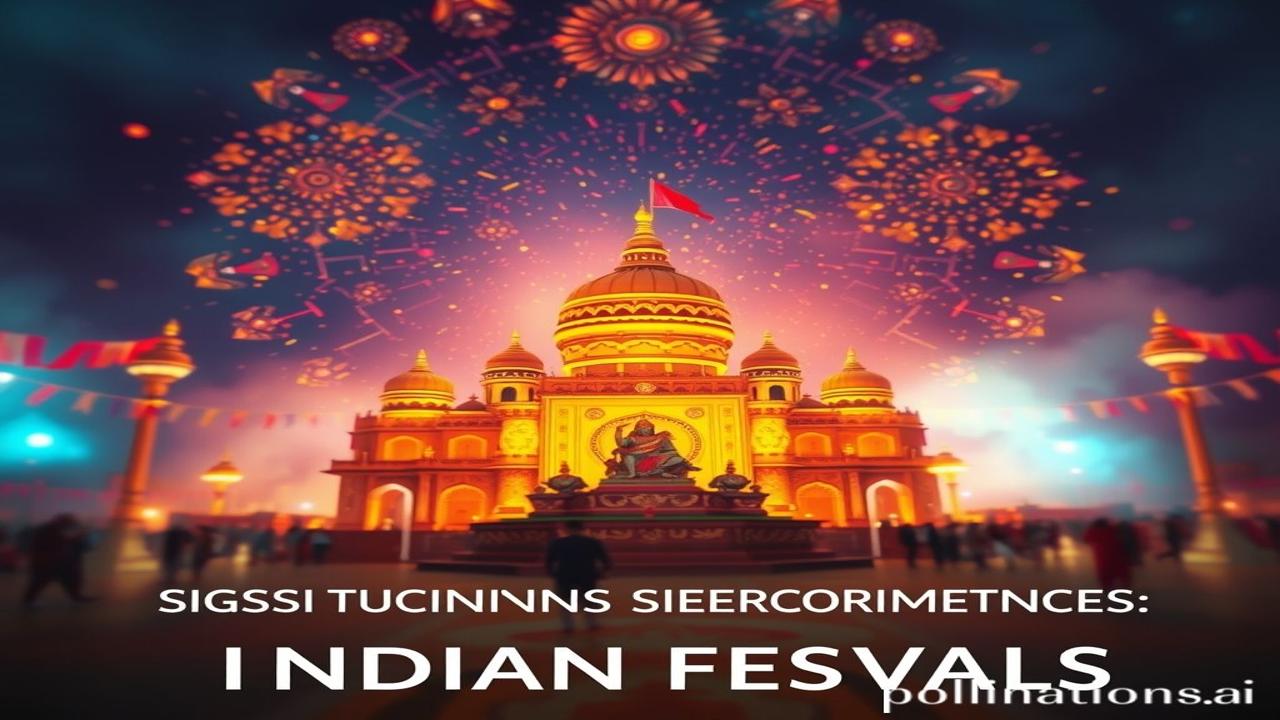Taraon Ki Zubaan: How Indian Festivals Echo the Cosmos
Kabhi socha hai, jab Diwali ki roshni aasmaan ko chhoo rahi hoti hai, ya Holi ke rang hawa mein ghul rahe hote hain, toh kya yeh sirf ek ittefaq hai? Kya yeh sirf riwaj hai, ya iske peeche chhupa hai koi gehra raaz, koi cosmic connection? Waqt ki dhool mein chhupi aisi hi kuch kahaniyon ko aaj hum kholenge, jinme jhalak milti hai Bharat ki astronomy aur tyoharon ke gehre naate ki.
Indian Festivals: Echoes of the Sky
Indian festivals aren’t just random dates plucked from a calendar. They are meticulously aligned with astronomical events, a tradition stretching back millennia. From the solar equinoxes to lunar cycles, the movements of planets and constellations, almost every major festival is linked to a celestial event. This connection reflects a deep understanding of the cosmos that was integral to ancient Indian life.
Think about it: Diwali, the festival of lights, is linked to the amavasya (new moon) of the Kartik month. Holi, the vibrant celebration of color, is celebrated around the Purnima (full moon) in the Phalgun month. Makar Sankranti marks the Sun’s transition into the zodiac sign of Capricorn, signifying the beginning of longer days. These aren’t coincidences; they’re deliberate alignments.
Ancient Astronomers and Their Cosmic Calendar
The origins of this astronomical connection can be traced back to the Vedic period. Rishis and munis, sitting under the starlit sky, studied the celestial movements with unwavering dedication. They observed, calculated, and eventually codified these observations into the Jyotisha, the ancient Indian system of astronomy and astrology.
These astronomers were not just mathematicians; they were philosophers, seers, and healers. They believed that the cosmos influenced every aspect of human life, from agriculture to health, from rituals to destiny. The knowledge they gained was painstakingly passed down through generations, enshrined in texts like the Surya Siddhanta and the Aryabhatiya. Imagine a gurukul, lit by the soft glow of oil lamps, where eager students meticulously copied charts of constellations, learning the secrets of the universe from their guru.
Ma Rati, the wife of a celebrated astronomer in Nalanda University around 500 CE, would often help her husband in making precise calculations. She used to say, “Aakash ke taaron mein hi jeevan ka sach chhupa hai. Agar hum unki zubaan samajh le, toh humein jeene ka arth bhi mil jayega.”
The Dance of the Stars and the Rhythms of Life
This cosmic understanding wasn’t limited to scholars and priests. It permeated everyday life, shaping the rhythms of agriculture, trade, and social interactions. Farmers used the lunar calendar to determine planting and harvesting times. Merchants planned their journeys based on auspicious celestial configurations. Families celebrated milestones like births and marriages during astrologically favorable periods.
Festivals became a way to honor the celestial forces and seek their blessings. The rituals, the prayers, the dances, and the offerings were all designed to harmonize with the cosmic energies and ensure prosperity and well-being.
Bharatiyata: Celebrating the Cosmos Today
Today, while many of us may not be aware of the precise astronomical calculations behind our festivals, the connection remains deeply ingrained in our cultural consciousness. The rituals we perform, the mantras we chant, and the deities we worship are all echoes of this ancient understanding.
We see it in the elaborate temple architecture, which often incorporates astronomical alignments. We hear it in the chants and songs, which invoke the cosmic forces. We feel it in the collective energy of communities coming together to celebrate the cycles of nature and the rhythms of the universe. This is Bharatiyata – a way of life that celebrates the interconnectedness of all things, from the smallest grain of sand to the most distant star.
Myth-Buster: Astrology vs. Astronomy
Log samajhte hain ki astrology aur astronomy ek hi cheez hai. Lekin asli sach yeh hai, astronomy is the scientific study of celestial objects and phenomena, while astrology is a belief system that suggests these objects influence human affairs. While ancient Indian astronomers developed sophisticated astronomical knowledge, they also practiced astrology. Today, we recognize the distinction between these two disciplines, but the historical connection remains undeniable.
The Sensory Symphony of a Festive Night
Picture this: The air is thick with the aroma of incense and ghee. Temple bells clang rhythmically, echoing through the narrow streets. The flickering flames of countless diyas cast dancing shadows on the faces of the devotees. Women, adorned in vibrant sarees, sing devotional songs, their voices rising and falling in harmony. The temple walls, cool and smooth to the touch, are etched with ancient carvings that tell stories of gods and goddesses. Yeh hai Bharat ki dharohar – a sensory symphony that connects us to our ancient past and our cosmic origins.
A Cosmic Reflection
As we light our diyas, smear colors on each other, and offer prayers to the deities, let us remember the profound connection between our festivals and the cosmos. Let us appreciate the wisdom of our ancestors, who understood the importance of living in harmony with the universe. As the ancient Shloka says:
“Yatha pinde tatha brahmande”
Just as the microcosm exists within the individual, so does the macrocosm exist within the universe. Let’s cherish this interconnectedness and live in harmony with the cosmos.
